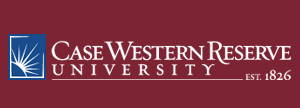Over the next several years, researchers in the College of Arts and Sciences will be seeking new ways to repair tissue damage in the human body—to regenerate the heart muscle of cardiac patients, for instance, and restore cartilage in the joints of people with rheumatoid arthritis. Undergraduates preparing for research careers will study introductory and advanced biology in upgraded labs, complete with the latest scientific equipment and instructional technology. The department of physics will recruit new faculty, certain that it can cover the startup costs for their research. And the College will have additional resources to support faculty participation in SAGES, the university's undergraduate seminar program.

L. David and E. Virginia Baldwin
All of these activities will be made possible through the generosity of L. David Baldwin (CIT '49), who recently donated $1.6 million to the College through the Case Alumni Association. A longtime benefactor, Baldwin has given the university nearly $4.5 million over the past decade to support both scientific research and undergraduate education. Commenting on Baldwin's latest gift, Cyrus C. Taylor, Dean of the College of Arts and Sciences, remarked, "David's impact on, and legacy within, the university is great and enduring."
A major portion of this legacy will be the new L. David and E. Virginia Baldwin Program for Cell-Based Therapy, housed in the biology department's Skeletal Research Center. Directed by Arnold I. Caplan, the Center has done pioneering work investigating mesenchymal stem cells (MSCs). MSCs are adult stem cells, produced by the body's bone marrow, that can differentiate into the cell types that make up virtually all of the body's skeletal and connective tissues. Whether they become bone, cartilage, muscle, fat, tendon or ligament—and these are just some of the possibilities—depends on the environmental stimulation they receive.
When Caplan and his colleagues began their research on MSCs twenty years ago, their first challenge was to figure out how to isolate the cells, harvested from human donors, and grow them in culture. Then, in the early 1990s, they learned to manipulate the culture environment and thus induce the cells to differentiate into specific types of tissue. More recently, they have developed methods to prompt the formation of skeletal tissue by MSCs implanted in experimental animals. This research raises an exciting possibility: that MSCs could be used to regenerate human tissue destroyed by injury or disease.
To illustrate, Caplan gives the example of a patient whose cardiac tissue has been damaged by a heart attack. Because the quantity of MSCs that humans produce diminishes with age, the patient may not have enough of these cells to repair the damage. But suppose that doctors could introduce culture-grown MSCs from another person into the patient's bloodstream. The MSCs, Caplan says, would "home to sites of tissue injury and initiate self-repair activities."
Researchers have identified another therapeutically valuable property of MSCs: they produce macromolecules that can suppress the immune system, especially at sites of injury, disease, or inflammation. For patients with autoimmune diseases such as rheumatoid arthritis—that is, diseases in which the immune system attacks the body's own cells—such suppression could help prevent or limit tissue damage. Moreover, the macromolecules offer the further benefit of helping to stimulate the process of tissue regeneration.
"I felt Arnold Caplan's research was very promising," Baldwin says. "I wanted my gift to make a difference, and his research has shown its potential to have applications in several diseases." For example, MSC therapies for Crohn's disease and heart disease are currently the subject of clinical trials, and the Baldwin Program for Cell-Based Therapy will pursue research that could lead to treatments for asthma as well as for rheumatoid arthritis and other conditions.
